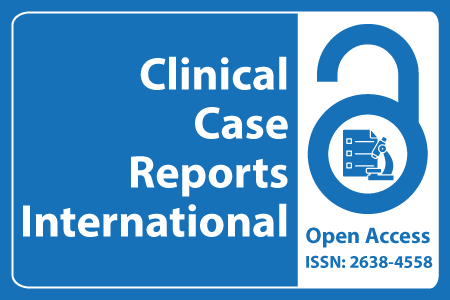
Journal Basic Info
- Impact Factor: 0.285**
- H-Index: 6
- ISSN: 2638-4558
- DOI: 10.25107/2638-4558
Major Scope
- Sleep Medicine and Disorders
- Dentistry and Oral Medicine
- Pulmonary Disease
- Cardio-Thoracic Surgery
- Sexual Health
- Respiratory Medicine
- Pulmonary Medicine
- Sleep Disorders & Sleep Studies
Abstract
Citation: Clin Case Rep Int. 2022;6(1):1382.DOI: 10.25107/2638-4558.1382
Dengue Vector Surveillance in South Dagon and Htantabin Townships, Yangon Region, Myanmar, During COVID-19 Transmission Period
Kyaw AMM, Min Oo SZ, Maung W, Aye KM, Aung ZZ, Phyu PP, Thu HM and Thant KZ
Department of Public Health, Ministry of Health, Myanmar
Department of Medical Research, Ministry of Health, Myanmar
Myanmar Academy of Medical Science, Myanmar
*Correspondance to: Kyaw Zin Thant
PDF Full Text Short Communication | Open Access
Abstract:
Dengue is one of the major mosquito-transmitted diseases in Myanmar and the situation may become more critical in 2020 and onwards, with the emergence of the transmission of novel Coronavirus COVID-19. Consequently, vector control activities have been limited in dengue endemic areas. A cross-sectional descriptive study was conducted in South Dagon and Htantabin Townships in Yangon Region, Myanmar, to conduct dengue vector surveillance during COVID-19 transmission period, 2020. In South Dagon Township, 1,065 potential mosquito breeding containers were inspected and Aedes immature stages were found in 246 containers. Meanwhile, 309 Aedes infested containers out of 1,216 inspected containers were found in Htantabin Township. Discarded container type was the highest Aedes infested proportion in both townships and meanwhile, flower vase was the most common type container. Container Index (CI), Household Index (HI) and Breteau Index (BI) for South Dagon and Htantabin Townships were 23.1% and 25.4%, 65.6% and 71.4%, and 153.8 and 163.5, respectively. Absence of house-to-house dengue vector surveillance during pandemic situation, health staff were mainly assigned to COVID-19 prevention activities and limitation of manpower were likely the main reasons for the increase of dengue vector abundance. Thus, it is very important to encourage the community to acquire the voluntary involvement in conducting dengue vector control measures to prevent the future dengue outbreak in the COVID-19 pandemic period.
Keywords:
Dengue; Vector surveillance; COVID-19
Cite the Article:
Kyaw AMM, Min Oo SZ, Maung W, Aye KM, Aung ZZ, Phyu PP, et al. Dengue Vector Surveillance in South Dagon and Htantabin Townships, Yangon Region, Myanmar, During COVID-19 Transmission Period. Clin Case Rep Int. 2022; 6: 1382.













